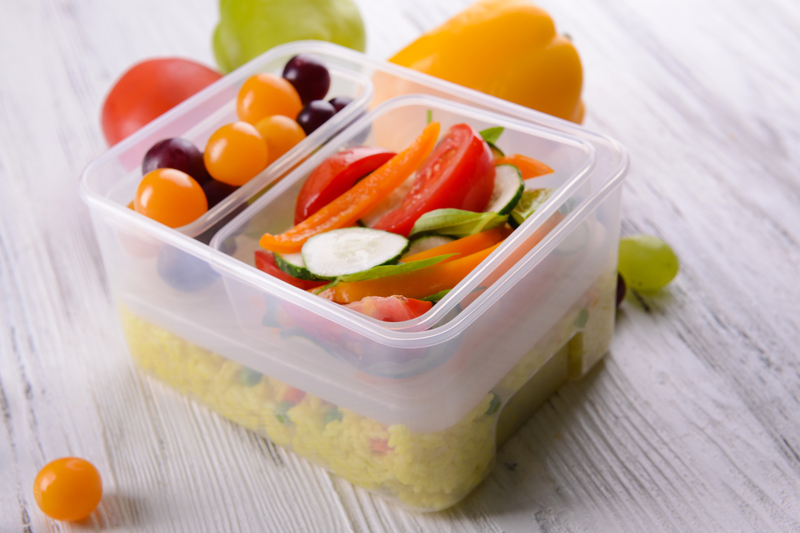Discover the Plastics to Avoid on Your Eco Quest
In today's world where environmental consciousness is more than a trend, it's crucial to be informed about the plastics to avoid on your eco-quest. While plastics offer convenience and versatility, not all plastics are created equal. Some types have profound negative impacts on the environment and even on human health. This comprehensive guide will help you identify which plastics to avoid, understand why they are harmful, and discover sustainable alternatives for a greener planet.

Understanding Plastic Types: The Basics for Eco-Conscious Living
Plastics are categorized by resin identification codes, usually indicated by a number inscribed within a recycling triangle on the product. These numbers, ranging from 1 to 7, help us identify the type of plastic we are dealing with. To embark on your eco-friendly journey, it's essential to know the difference between these plastics and pinpoint those best avoided for a more sustainable lifestyle.
Plastic Identification Codes and Their Impact
- 1 - PET or PETE (Polyethylene Terephthalate): Commonly found in water bottles and food packaging.
- 2 - HDPE (High-Density Polyethylene): Used in milk jugs, detergent bottles, and toys.
- 3 - PVC (Polyvinyl Chloride): Present in pipes, vinyl flooring, and some food wraps.
- 4 - LDPE (Low-Density Polyethylene): Found in grocery bags and squeezable bottles.
- 5 - PP (Polypropylene): Used for yogurt containers, straws, and bottle caps.
- 6 - PS (Polystyrene): Known as Styrofoam, found in takeaway containers and disposable cups.
- 7 - Other (Various Plastics, including Polycarbonate): Includes BPA-containing plastics and mixed plastics.
Out of these, certain plastics stand out as the most problematic in terms of environmental impact and human health risks. Let's delve deeper to discover the plastics to avoid on your eco quest.
Top Problematic Plastics to Avoid: Choices Matter
1. PVC (Polyvinyl Chloride) - Resin Code #3
PVC is recognized for its harmful chemical additives and dire environmental consequences. Often used in pipes, faux leather, shrink wraps, and children's toys, this plastic is laden with phthalates and heavy metals. Upon incineration, it releases dioxins--highly toxic chemicals with strong links to cancers and hormone disruptions.
- Why Avoid It? Production and disposal of PVC create persistent toxins that contaminate air, water, and soil. Moreover, recycling PVC is challenging, increasing landfill burdens.
- Eco-Friendly Alternatives: Choose glass, stainless steel, or cellulose-based materials for wraps and household piping.
Tiptip: When you see resin code '3' or 'V', steer clear and look for products marked 'PVC-free'.
2. Polystyrene (PS, or Styrofoam) - Resin Code #6
Polystyrene, commonly recognized as Styrofoam, is well-regarded for its light weight and insulation properties. However, it's equally notorious for its persistence in the environment, poor recyclability, and its tendency to break down into microplastics that pollute oceans and threaten wildlife.
- Health Concerns: Polystyrene can leach styrene, a possible human carcinogen, especially when heated or used with hot foods and beverages.
- Why Avoid It? It is difficult to recycle, often contaminates other recyclable materials, and is frequently found in beach litter and marine debris.
- Sustainable Swaps: Opt for compostable paper or reusable silicon cups and takeaway containers.
3. Polycarbonate and "Other" (Often Code #7) - Mixed or Unidentifiable Plastics
The "Other" plastics category (resin code #7) is a catch-all for materials that don't fit elsewhere. This group often includes polycarbonate plastics containing bisphenol-A (BPA), a chemical known for disrupting hormones, particularly concerning for babies and children.
- Why Are They Dangerous? Products using "Other" plastics have unpredictable components and are highly likely to include BPA or other toxic additives.
- Hard to Recycle: Mixed material makes recycling uneconomical and inefficient, so these plastics typically end up as landfill or incinerated.
- Safer Picks: Use glass, ceramics, or stainless steel for water bottles and food storage.
Other Problematic Plastics: A Closer Look
Single-Use Plastics: The Silent Polluters of Our Time
Even when not specifically resin codes 3, 6, or 7, single-use plastics play a major role in pollution. Items like plastic straws, cutlery, and shopping bags are designed for convenience but persist for centuries in the environment. These plastics contribute massively to ocean pollution, threatening marine and human life alike.
- Quick Facts:
- 8 million tons of plastic waste enters our oceans every year.
- Plastic particles have been found in the seafood we consume.
- What's the Solution? Carry reusable alternatives such as metal, bamboo, or biodegradable single-use options.
Plastics with Harmful Additives: Beyond Resin Codes
Not all plastic hazards are easily identified by numbers. Additives like flame retardants, plasticizers, or colorants in various plastics can leach out and cause harm to humans and wildlife. This issue highlights the importance of choosing plastics with transparency and clear labeling.
Negative Impacts of Problematic Plastics
1. Environmental Damage
- Microplastic Pollution: Many plastics break down into microscopic particles, infiltrating our waterways, soils, and food systems.
- Wildlife Harm: Animals ingest plastic, mistaking it for food, resulting in suffocation, starvation, and poisoning.
- Waste Management Crisis: Certain plastics clog recycling streams and overflow landfills, complicating global waste management.
2. Human Health Risks
- Leaching Chemicals: Toxins like BPA, phthalates, and styrene migrate from plastics to our foods, drinks, and the environment.
- Endocrine Disruptors: Compounds found in plastics can disrupt hormones, especially critical for children and pregnant women.
How to Identify and Avoid Harmful Plastics
Embarking on your eco quest to avoid problematic plastics can be simplified by learning to read labels, understanding recycling codes, and being a discerning consumer.
Practical Tips for Everyday Life
- Check the Recycling Number: Avoid products labeled with #3 (PVC), #6 (PS), and #7 (Other/BPA).
- Seek Out 'BPA-Free' Labels: Be cautious--sometimes BPA-free products substitute other, equally harmful bisphenols. Prefer glass or stainless steel when possible.
- Reduce Single-Use Plastics: Bring reusable shopping bags, water bottles, and coffee cups.
- Choose Natural Fibers: For clothing and textiles, opt for cotton, linen, or bamboo instead of polyester-based synthetics.
- Avoid Heating Plastics: Many plastics leach toxins more readily when heated. Use ceramic or glass in the microwave.
Sustainable Alternatives: Make Greener Choices
Replacing the plastics to avoid with safer alternatives is a key strategy for any eco warrior on a plastic-free journey. Let's examine some effective, accessible swaps:
Durable and Reusable Materials
- Glass: Non-toxic, endlessly recyclable, and ideal for food storage and drinking.
- Stainless Steel: Long-lasting, rustproof, and perfect for water bottles, lunch boxes, and straws.
- Bamboo and Wood: Compostable, lightweight options for cutlery, toothbrushes, and household items.
- Plant-Based Bioplastics: Made from renewable resources, these are increasingly available for packaging, plates, and even bags.
- Cloth Bags: Replace single-use bags with cotton or hemp totes for shopping and storage.
Rethink Food Storage and Packaging
- Switch from plastic wrap to beeswax wraps or silicone lids.
- Prefer products packaged in paper, glass, or compostable materials.
- Shop at zero-waste or bulk stores to avoid unnecessary packaging.

Community and Policy Action: Advocate for a Plastic-Free Future
It's not just about individual choices--the plastic problem is systemic. Momentum is building for policy change and industry reform aimed at tackling single-use and problematic plastics. Your role as a conscious consumer can drive demand for eco-friendly products and hold brands accountable.
Get Involved
- Support Bans and Regulations: Many countries and cities have banned or limited single-use plastics, especially bags and Styrofoam containers. Add your voice to local campaigns.
- Encourage Corporate Responsibility: Choose brands that take back packaging, minimize plastic, or use recycled content.
- Educate Others: Share tips, organize community clean-ups, or host awareness events at schools and workplaces.
The Bottom Line: Your Eco Quest for Safer Plastics
Undertaking an eco quest to avoid problematic plastics isn't always straightforward, but understanding which plastics to steer clear of is the foundation for positive change. By avoiding PVC, polystyrene, polycarbonates/BPA, and unnecessary single-use plastics, and opting for sustainable alternatives, you not only safeguard your health but also contribute to a cleaner, greener planet.
Remember: Every eco-conscious choice matters! Start today--read labels, bring your own containers, and advocate for a future free from plastic pollution. Your planet--and future generations--will thank you.